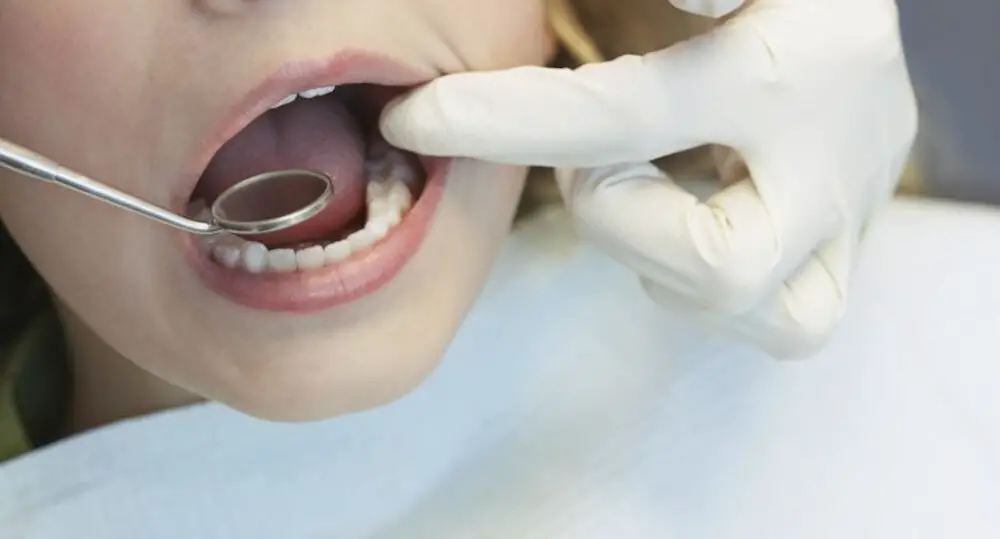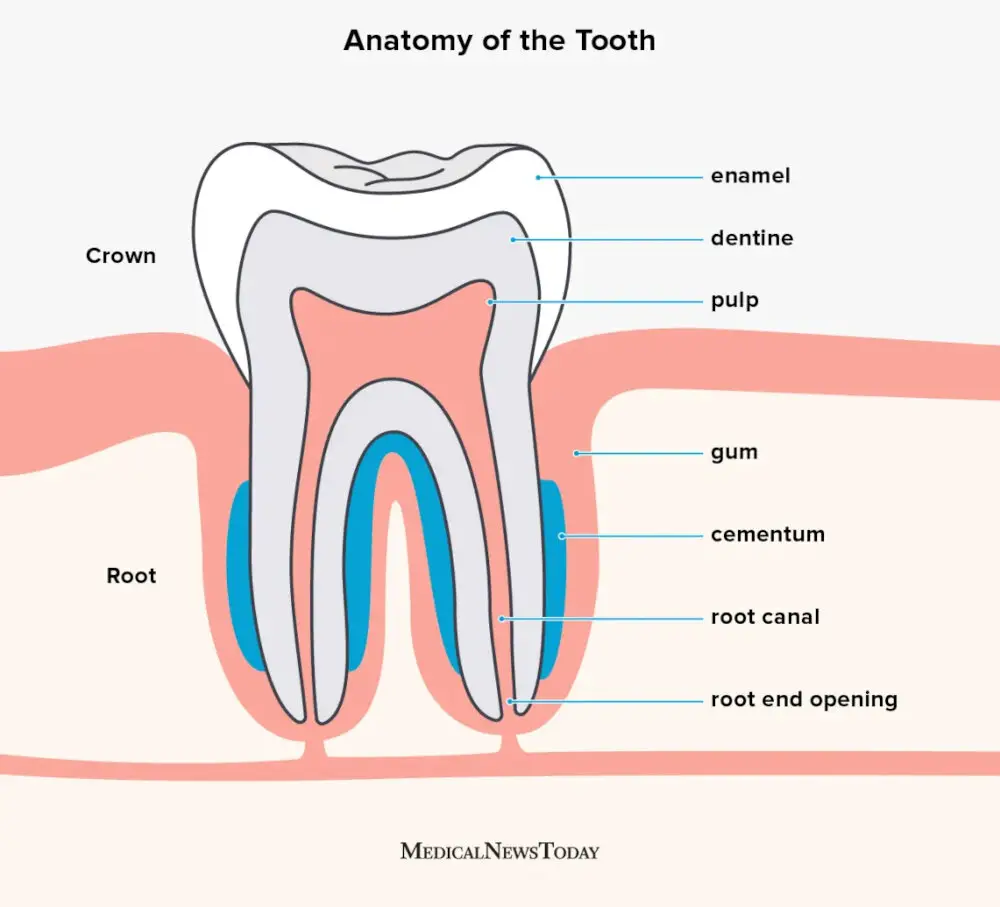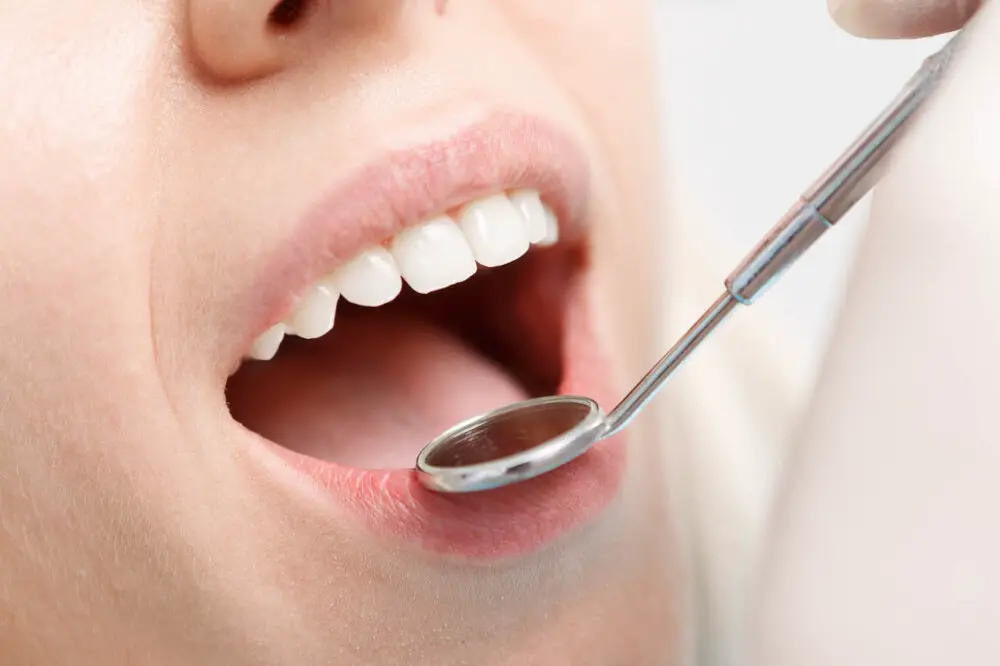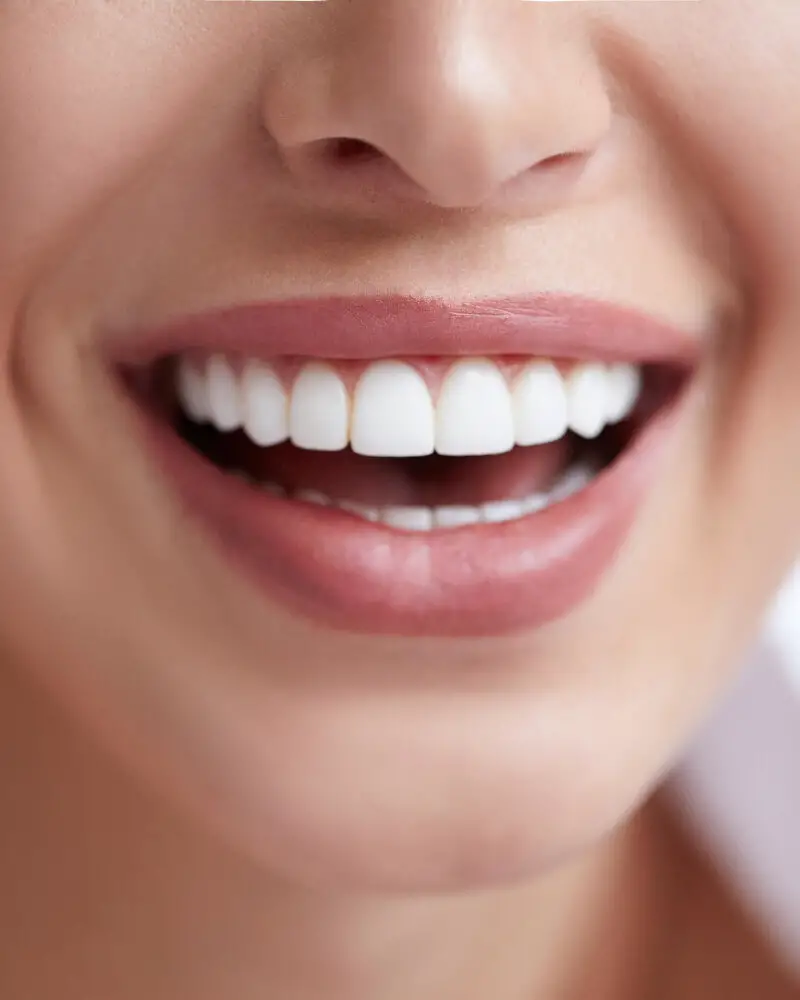Why Does Chocolate Cause Tooth Pain? Explained by Dental Experts

Chocolate is one of the most consumed sweets in the world, enjoyed by millions of people of all ages. However, for some, the mere thought of indulging in a chocolate bar or a piece of chocolate cake can cause anxiety and fear of experiencing tooth pain. But why does chocolate cause tooth pain? This question has puzzled many chocolate lovers and dental experts alike, and the answer is not as straightforward as one may think. To understand why chocolate causes tooth pain, it’s essential first to understand tooth sensitivity. Tooth sensitivity occurs when the enamel, which is the outer layer of the tooth, becomes worn down or the gum line recedes, exposing the underlying dentin. Dentin is a porous layer that contains tiny tubules that lead to the tooth’s nerve center. When the dentin is exposed, hot, cold, acidic, or sweet foods and beverages can stimulate the nerve center, causing a sharp, shooting pain. With this in mind, we can now explore the reasons why chocolate can be a culprit for tooth pain and how dental experts explain this phenomenon.
Chocolate is one of the most popular treats consumed worldwide, and its popularity can be attributed to its rich, creamy texture and delicious taste. However, chocolate can cause tooth pain due to its high sugar content. When consumed, the bacteria in our mouth feed on the sugar in chocolate, producing acid that can erode the enamel on our teeth. This erosion can lead to sensitivity and pain in the teeth, especially when consuming hot or cold foods. Additionally, chocolate can also get stuck in the crevices of our teeth, creating a breeding ground for bacteria and leading to decay and further tooth pain. Therefore, it is essential to practice good oral hygiene and limit the consumption of sugary treats like chocolate to maintain healthy teeth and gums.
The phenomenon of tooth pain caused by chocolate consumption has been extensively studied by dental experts, who have come up with various explanations for this curious occurrence. One possible reason is the high sugar content of chocolate, which can lead to the formation of plaque and eventually tooth decay. Another factor is the acidity of chocolate, which can erode the enamel and expose the sensitive nerves in the teeth. Additionally, some people may have a specific sensitivity to chocolate or certain ingredients in it, leading to tooth pain or discomfort. While enjoying chocolate in moderation is generally safe for dental health, it is important to be aware of these potential risks and take proper care of our teeth.
Sugar and Bacteria

Sugar and bacteria have a complex and intertwined relationship when it comes to oral health. Bacteria in the mouth feed on sugar and other carbohydrates, producing acid that can erode tooth enamel and cause cavities over time. This process is known as acidogenicity and can be exacerbated by frequent snacking or sipping sugary drinks throughout the day, which prolongs the exposure of teeth to acid. Furthermore, certain types of bacteria, such as Streptococcus mutans, are particularly adept at fermenting sugar and producing acid. They can also form a sticky biofilm called plaque, which can coat teeth and provide a protective environment for bacteria to thrive. This is why regular brushing, flossing, and dental cleanings are crucial for maintaining good oral health and preventing tooth decay.
Sugar plays a significant role in tooth decay, and chocolate contains a considerable amount of sugar that can cause tooth pain. When sugar combines with bacteria in the mouth, it produces acid that erodes the tooth enamel, leading to cavities and decay. Chocolate contains a high amount of sugar, and the longer sugar remains on the teeth, the more damage it can cause. The sugar in chocolate feeds the bacteria in the mouth, creating acid that attacks the teeth and leads to toothache and sensitivity. Therefore, it is essential to limit the consumption of sugary foods, including chocolate, and maintain good dental hygiene to prevent tooth decay.
The human mouth is teeming with a multitude of bacteria that have a natural affinity towards sugar. These bacteria feed on the sugar present in the food we eat and produce acid as a byproduct of their metabolic activity. This acid, when left unchecked, can start to erode the protective enamel layer of our teeth, leading to painful tooth decay. The acid produced by these bacteria can also cause inflammation and irritation of the gums, leading to bleeding and bad breath. Therefore, it is important to maintain good oral hygiene and limit the intake of sugary foods to prevent the growth of harmful bacteria in the mouth.
Temperature Sensitivity

Temperature sensitivity is the phenomenon where teeth become sensitive to hot or cold temperatures. This condition affects millions of people worldwide, and it can be caused by various factors. One of the most common causes of temperature sensitivity is dental erosion, which is the wearing away of the tooth enamel. When the enamel is eroded, the underlying dentin is exposed, and this can cause sensitivity to hot or cold temperatures. Other causes of temperature sensitivity include gum recession, tooth decay, and cracks in the teeth. The good news is that temperature sensitivity can be treated successfully by a dentist, and there are several options available to relieve the discomfort. When it comes to chocolate, many people experience tooth pain when they consume this delicious treat. The reason for this is that chocolate is typically served at room temperature, and when it comes into contact with the teeth, it can cause a sudden temperature change. This temperature change can trigger the nerves in the teeth, leading to discomfort or pain. Additionally, chocolate contains sugar, which can contribute to tooth decay and erosion, further exacerbating tooth sensitivity. However, this doesn’t mean that you have to give up chocolate altogether. By consuming chocolate in moderation and practicing good oral hygiene habits, you can still enjoy this sweet treat without causing tooth pain or sensitivity.
The temperature of chocolate, which is usually at room temperature or above, can cause sensitivity in already weakened teeth due to its high sugar and acid content. When chocolate comes in contact with teeth, it can dissolve enamel, which is the outermost layer of teeth. This can lead to tooth decay and sensitivity, especially if the enamel is already weakened. Additionally, the heat from the chocolate can exacerbate the sensitivity, causing discomfort and pain. Therefore, it is essential to maintain good oral hygiene and limit the consumption of sugary and acidic foods and drinks to prevent tooth decay and sensitivity.
The sensitivity of teeth results from the exposure of dentin, the inner layer of teeth, to external stimuli, such as cold, hot, sweet, or sour foods. When consuming chocolate, the sugar and acid content can cause erosion and wear down the enamel, the protective outer layer of teeth. When the enamel is compromised, the dentin becomes exposed, and the nerve endings in the teeth are more susceptible to irritation and pain. Moreover, the texture of chocolate can also aggravate the sensitivity, as it can get stuck in between the teeth and cause discomfort. Therefore, people with sensitive teeth may experience pain when consuming chocolate, especially if they have poor oral hygiene habits or dental conditions that affect the enamel.
Caffeine and Tannins

Caffeine and tannins are two compounds found in chocolate that can contribute to tooth pain. Caffeine is a stimulant found in various foods and drinks, including coffee, tea, and chocolate. It can cause tooth sensitivity by constricting the blood vessels in the gums, reducing blood flow and increasing the pressure in the nerves. This can make the nerves more susceptible to pain sensations. Additionally, caffeine can also contribute to dehydration, which can lead to dry mouth and a decrease in saliva production, making it easier for bacteria to thrive and cause tooth decay. Tannins, on the other hand, are natural compounds found in plants, including cocoa beans. They are responsible for the bitter taste in chocolate and are also found in tea and wine. Tannins have a drying effect on the mouth, which can lead to a decrease in saliva production and an increase in the acidity level of the mouth. This can cause the enamel on the teeth to weaken, making them more susceptible to tooth decay and erosion. Tannins can also stain the teeth, causing discoloration and further damage to the enamel. Overall, the combination of caffeine and tannins in chocolate can cause tooth pain and damage if consumed in excess or without proper oral hygiene.
Chocolate is a beloved treat for many, but it’s important to understand how it can affect our oral health. One of the reasons why chocolate can cause tooth pain is because it contains caffeine and tannins. These compounds can lead to dry mouth and decreased saliva production, which can make it easier for bacteria to thrive in our mouths. Caffeine is a stimulant that can also cause our teeth to feel sensitive, while tannins can cause astringency and a dry, puckering sensation in our mouths. While chocolate can be enjoyed in moderation, it’s important to be mindful of its potential effects on our oral health.
When your mouth becomes dry, it means that there is a lack of saliva production in your mouth. Saliva is essential for oral health because it helps to wash away the harmful bacteria that cause tooth decay and gum disease. When there is not enough saliva, the bacteria thrive, leading to cavities and other oral health problems. Additionally, dryness can lead to tooth pain and sensitivity because the enamel on your teeth can become eroded and weakened, exposing the sensitive layers underneath. As a result, consuming chocolate, which contains sugar and acid, can exacerbate the pain and sensitivity in your teeth, making it uncomfortable to eat. It is important to stay hydrated and maintain good oral hygiene to prevent dryness and tooth pain.
Preexisting Dental Issues

Preexisting dental issues can be a major factor in why chocolate causes tooth pain. If a person already has sensitive teeth or tooth decay, consuming chocolate can worsen these problems. The sugar in chocolate can cause bacteria to grow and produce acid, which can erode tooth enamel and cause cavities. Additionally, some types of chocolate, such as dark chocolate, can be especially sticky and difficult to remove from teeth, which can lead to plaque buildup and further dental problems. If a person already has existing dental issues, it is important for them to take extra precautions when consuming chocolate or other sugary foods. This may include brushing and flossing more frequently, using a toothpaste designed for sensitive teeth, and visiting a dentist regularly for checkups and cleanings. Additionally, individuals with preexisting dental issues may want to consider limiting their consumption of chocolate and other sugary foods to prevent further damage to their teeth. Overall, it is important to prioritize dental care and maintain good oral hygiene to prevent tooth pain and other dental problems.
Preexisting dental issues like cavities and gum disease can make teeth more sensitive and susceptible to pain when consuming chocolate. The reason behind this is that chocolate contains high levels of sugar and acidic compounds that can exacerbate existing oral health problems. When these compounds come in contact with the teeth, they can cause the enamel to erode, exposing the underlying nerves and causing discomfort and pain. Additionally, chocolate can also stick to the teeth, providing a breeding ground for harmful bacteria that can further damage the teeth and gums. As such, it is crucial to maintain good oral hygiene practices and seek timely dental treatment to prevent dental issues from getting worse and causing unnecessary pain and discomfort.
Consuming chocolate can worsen certain dental issues due to its high sugar and acid content. Sugar can feed the bacteria in the mouth, leading to the formation of plaque and cavities. The acid in chocolate can erode the enamel on the teeth, which can increase tooth sensitivity and cause pain. Additionally, chocolate can get stuck in between teeth and in the crevices, providing a breeding ground for bacteria. This can lead to gum disease, which can cause pain and other dental problems. Therefore, it is important to consume chocolate in moderation and maintain good oral hygiene practices to prevent dental issues and tooth pain.
Chocolate is a beloved treat for many people, but it can also cause tooth pain for a variety of reasons. One of the most common culprits is sugar, which feeds the harmful bacteria in the mouth and leads to tooth decay. Additionally, chocolate can be temperature-sensitive, causing discomfort for those with sensitive teeth. Caffeine and tannins found in chocolate can also contribute to tooth pain by dehydrating the mouth and increasing sensitivity. Finally, preexisting dental issues such as cavities or gum disease can be exacerbated by consuming chocolate, leading to pain and discomfort. By understanding these various factors, individuals can make informed choices about their chocolate consumption and take steps to protect their dental health.
It’s no secret that chocolate is a beloved treat around the world, but did you know that it can also cause tooth pain and decay? While it may be tempting to indulge in sugary foods like chocolate, it’s important to practice good oral hygiene to prevent these issues from occurring. This means brushing and flossing regularly, as well as limiting your consumption of sugary foods. While it may be difficult to resist the temptation of chocolate, it’s important to remember that the long-term effects on your oral health can be detrimental. By taking steps to care for your teeth and gums, you can enjoy your favorite treats without having to worry about tooth pain and decay.
Conclusion

In conclusion, dental experts have explained that chocolate can cause tooth pain due to its high sugar content and acidic pH level. These factors can lead to the erosion of tooth enamel, making teeth more susceptible to sensitivity and pain. However, it is important to note that not all chocolate is created equal, and dark chocolate with a higher percentage of cocoa solids may be less likely to cause tooth pain. Additionally, practicing good oral hygiene habits such as brushing and flossing regularly can help prevent tooth pain and other dental issues. Overall, moderation and mindfulness when consuming chocolate can help maintain a healthy and pain-free smile.





